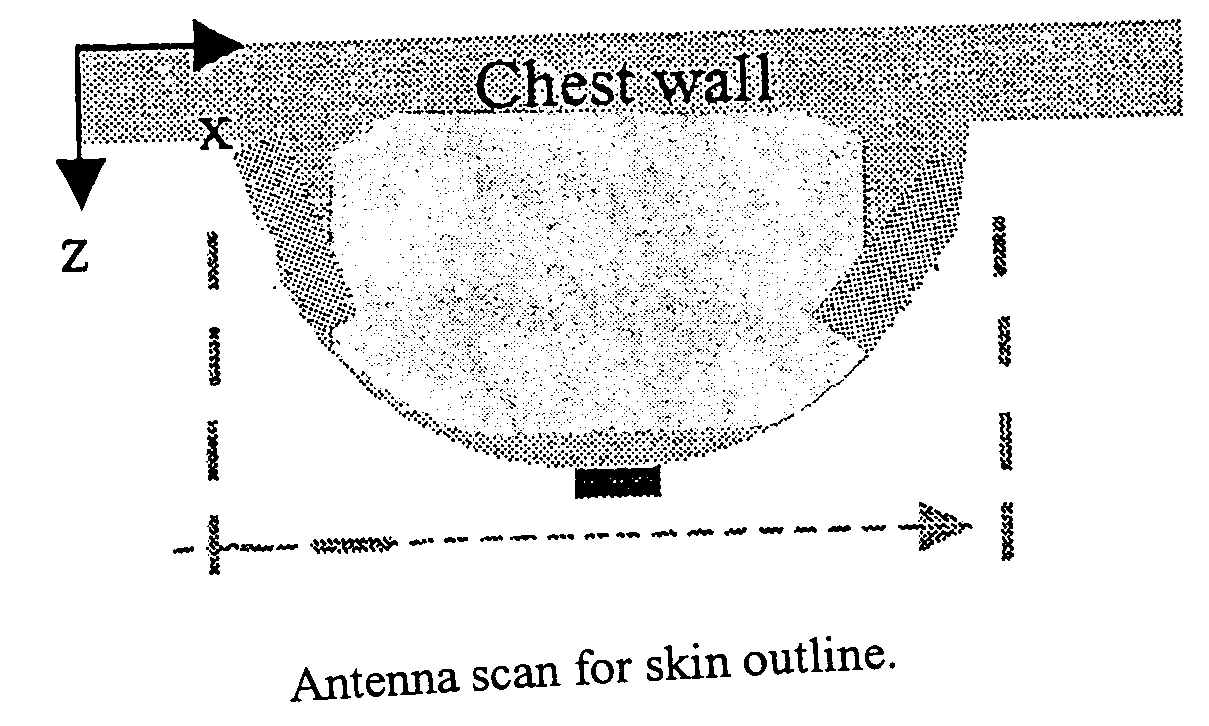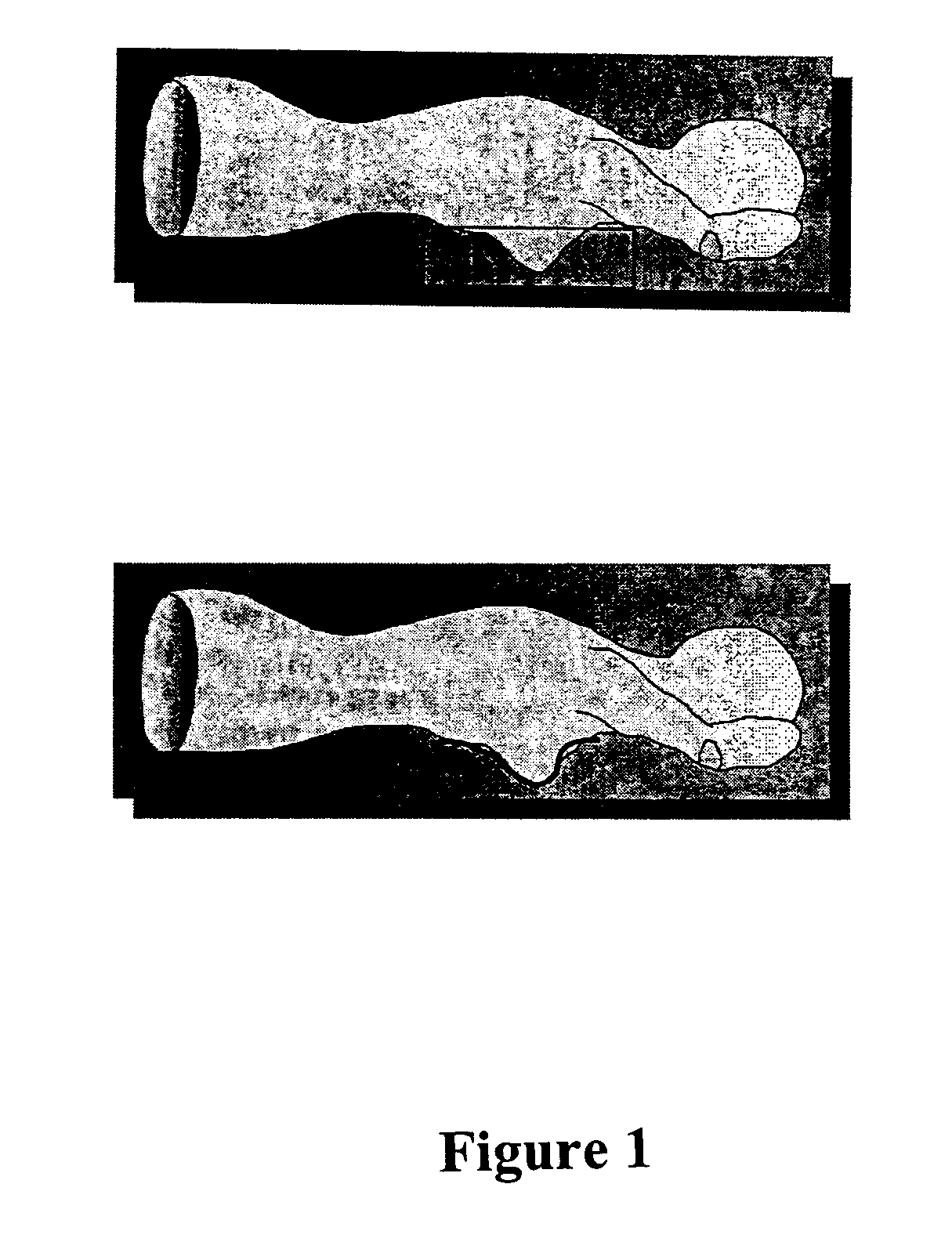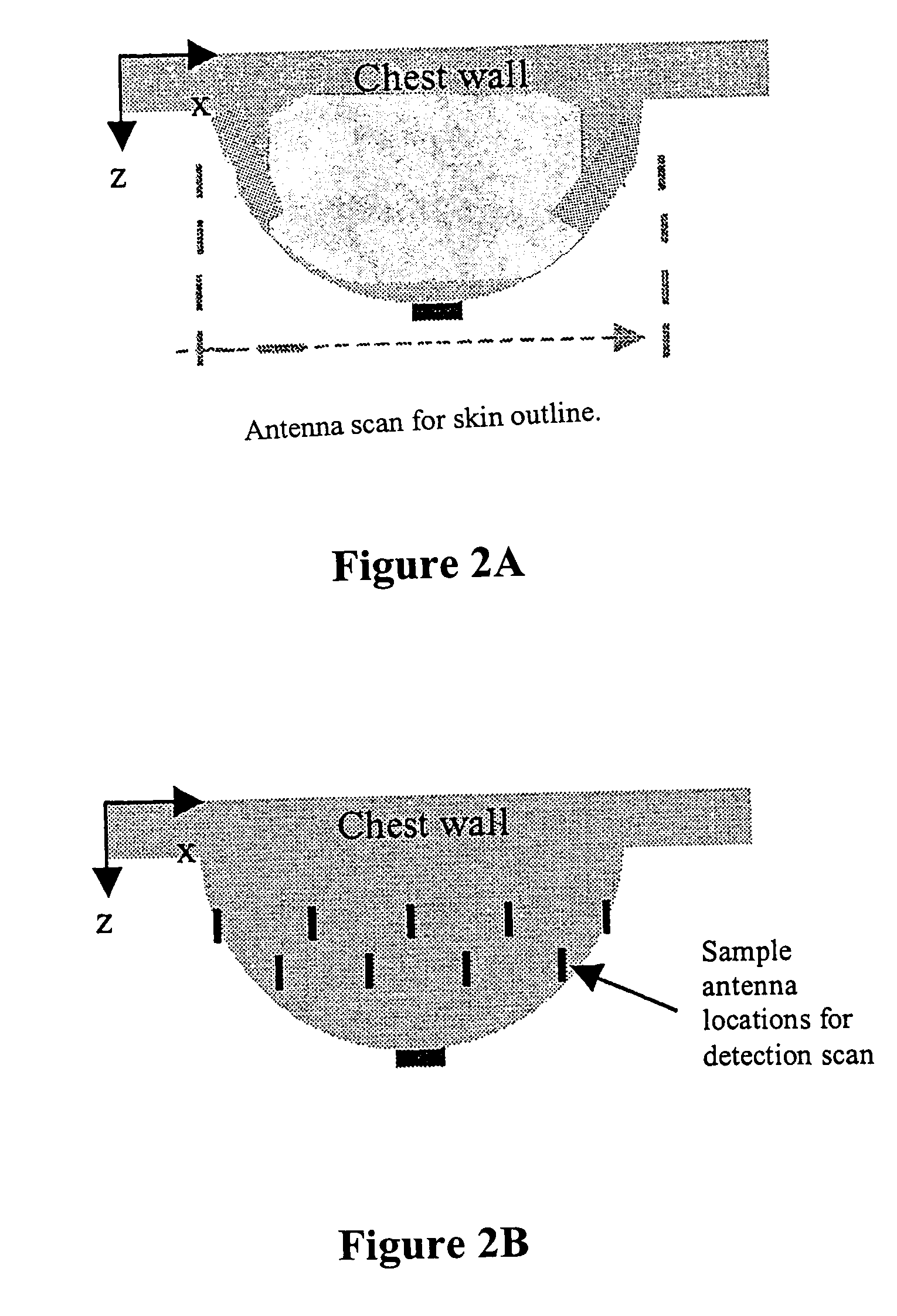Tissue sensing adaptive radar imaging for breast tumor detection
a breast tumor and adaptive radar technology, applied in the field of breast tumor detection methods and apparatuses, can solve the problems of small risk of breast tumor induced in patients, undiagnosed lesion, and unknown limitations, and achieve the effect of small image contribution and large image contribution
- Summary
- Abstract
- Description
- Claims
- Application Information
AI Technical Summary
Benefits of technology
Problems solved by technology
Method used
Image
Examples
Embodiment Construction
[0016] The present invention provides for a method and apparatus for tissue sensing adaptive radar imaging of breast tissue. When describing the present invention, all terms not defined herein have their common art-recognized meanings. As used herein, “microwave” means non-ionizing electromagnetic radiation which has a wavelength between about 10−4 to 10−1 m, and frequencies in the range of about 108 to about 1010 Hz. The term “radar” refers to a method of detecting the presence and location of an object by detecting reflections of microwave radiation from the object. Microwave imaging in medical situations is well described in a publication entitled “Medical Applications of Microwave Imaging”, edited by L. E. Larsen and J. H. Jacobi, IEEE Press 1986, the contents of which are incorporated herein by reference. The term “tissue sensing” means a process of radar imaging which may distinguish between various tissues of the breast such as skin, glandular tissue, and tumors. The term “ad...
PUM
 Login to View More
Login to View More Abstract
Description
Claims
Application Information
 Login to View More
Login to View More - R&D
- Intellectual Property
- Life Sciences
- Materials
- Tech Scout
- Unparalleled Data Quality
- Higher Quality Content
- 60% Fewer Hallucinations
Browse by: Latest US Patents, China's latest patents, Technical Efficacy Thesaurus, Application Domain, Technology Topic, Popular Technical Reports.
© 2025 PatSnap. All rights reserved.Legal|Privacy policy|Modern Slavery Act Transparency Statement|Sitemap|About US| Contact US: help@patsnap.com



